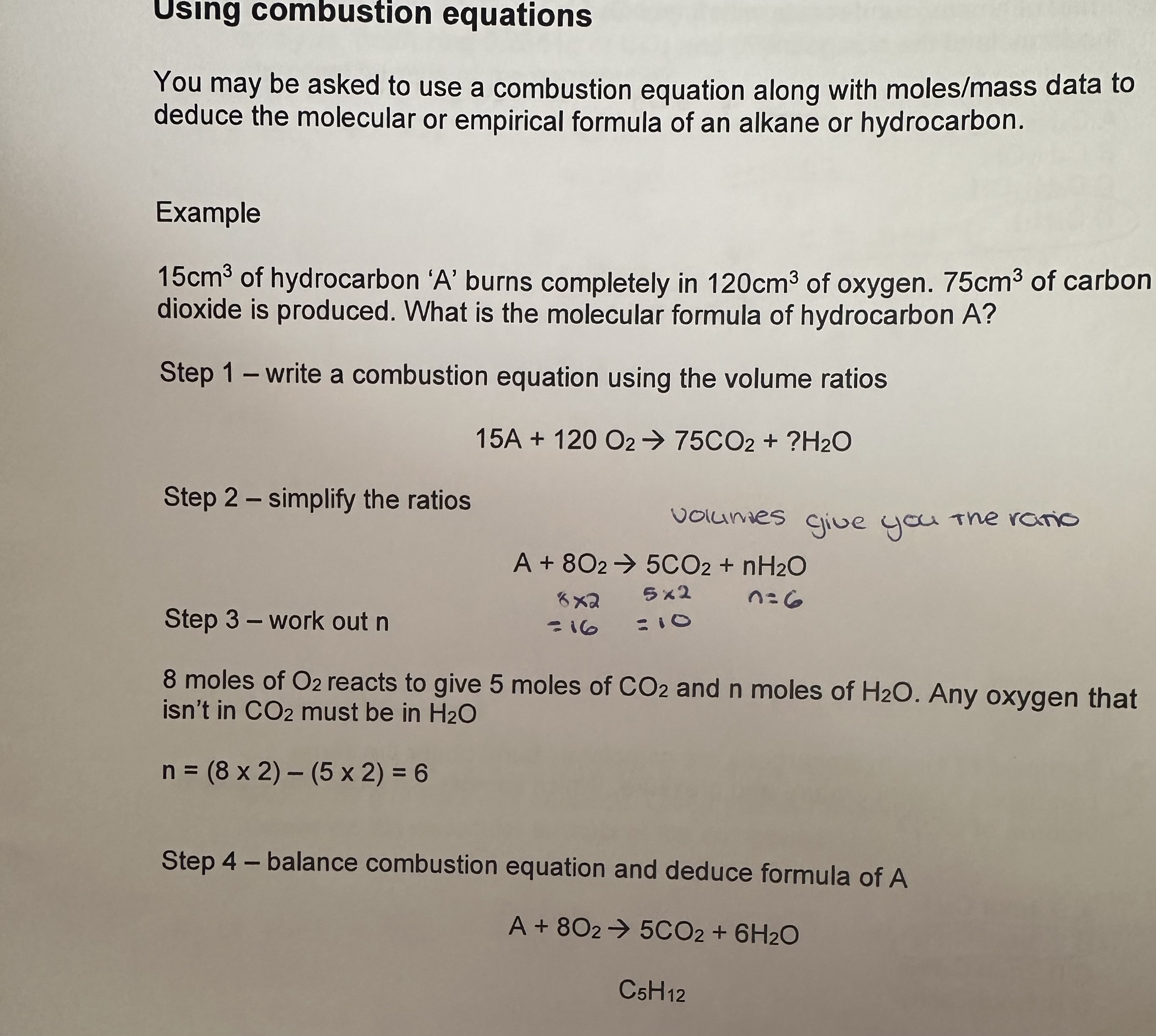Alkanes
1/13
There's no tags or description
Looks like no tags are added yet.
Name | Mastery | Learn | Test | Matching | Spaced |
|---|
No study sessions yet.
14 Terms
Sigma Bonds
A bond formed by the lengthways overlap of orbitals directly between two bonding atoms
What type of bonds are sigma bonds?
C-C and C-H bonds in alkanes
They are the strongest type of covalent bond and will have a high bond enthalpy
Due to the high bond enthalpy, alkanes are unreactive
Shape of Alkanes and Bond Angle
Shape - Tetrahedral
Bond Angle - 109.5
Factors affecting boiling point of alkanes: Carbon Chain Length
Boiling point increase as carbon chain length increases as there are more electrons which means there are stronger London Forces between the molecules so more energy required
Factors affecting boiling point of alkanes: Branching
As Branching increases boiling point decreases because there is less surface area contact so weaker London force between the molecules so little energy to overcome
Combustion of alkanes
Alkane + Oxygen → Carbon dioxide + water
More exothermic so it release more energy
Incomplete Combustion
Alkane + Oxygen → Carbon Monoxide + Water
Alkane + Oxygen → Carbon + Water
Using Combustion Equations

Free Radical Substitution
Alkane + Halogen → Haloalkane + Hydrogen Halide
CH4 + X2 → CH3X = HX
Free Radical Substitution Mechanism
Conditions - UV Light
Reagents - Halogen Molecule
Three Stages of the Mechanism
Initiation - Creates 2 Halogen Radicals
Propagation: 1st Propagation - Alkane reacts with the Halogen radical, 2nd Propagation - Alkyl radical reacts with halogen molecule
Termination - Radicals combine to make neutral molecules
What is UV light used for?
Energy required to break the X-X bond
Issues with free radical substitution: Low Yield
Further substitution can occur forming a mixture of products
Substitution can occur in different positions creating position isomers
Why is free radical substitution mechanism is likely to produce a mixture of organic products
Substitution can replace an H atom